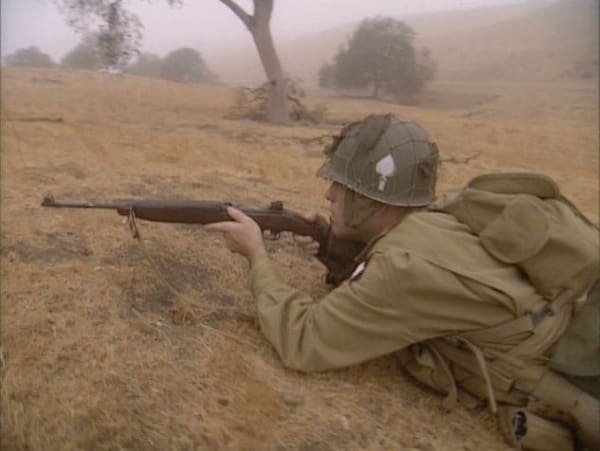Daniel Gallington is a Senior Fellow and Member of the Board of Regents at the Potomac Institute for Policy Studies. Writing for The Cypress Times [click here to download], the national security and intelligence policy consultant claims the State Department blocked South Korea’s planned sale of 857,470 rifles (770,160 M1 Carbines and 87,310 M1 Garands) because the South Koreans don’t own the weapons in the first place. Confused? Here’s the deal . . .
Because of my background and experience in military “Security Assistance”, I thought that the rifles had most likely been transferred to the Koreans under the old “MAP” or “Military Assistance Program” that we had in the 60’s.
This was a “grant aid” program, which meant that they were not “sold” to the Koreans, and the ROK did not own them. They were loaned, and remained the property of the US government, specifically the US Army, who was the “logistic implementer” for the MAP program.
Gallington did a little research and found the smoking gun.
“Due to increased North Korean aggression and infiltration, the supply of Army materiel for the prior and current year Korean military assistance program has been expedited, including a shipment of large numbers of individual weapons to arm the Republic of Korea Homeland Defense Reserve Forces.”
Source: “Department of the Army Historical Summary, FY 1969”. Page 4 of Chapter XI., “Military Assistance and Foreign Liaison”.
So, most likely, the “large numbers” of these rifles (described as “individual weapons”) were transferred to the ROK to use for their defense during the 60’s; and, because they most likely were and still are MAP property, the rifles remain the property of the US – unless they were subsequently sold or otherwise transferred to the ROK.
The rifles are ours. The South Koreans were looking to transfer the rifles back to the U.S., not sell them. So what’s with all the political mischaracterization and maneuvering, especially the bit from the State Department, who said they were blocking the sale so that the rifles didn’t “fall into the wrong hands”?
One has to ask themselves why the transaction is being characterized (by the STATE Department) as a “sale” and “import” in the first place?
Easy: If the operative act is described as the purchase of the rifles by private arms dealers for “import” into the US, then the STATE Department (and the ATF) might have jurisdiction to regulate the transaction and even to “deny” the import as they might for any other firearms import. Can you see how this could be part of an anti-gun scam? The other part is probably even more political: There is no chance – during the Obama Administration – that DOD or the Army is going to request officially that these rifles be returned.
If the goal of anti-gun zealots in the Obama Administration is to keep these rifles – some even classified as antiques – out of the US any way they can, then this scam needs to be broken up before any of the operative parts are implemented.
As I said at the beginning of this story, there’s more here than meets the eye. While I’m on board with the revelation that the guns belong to the United States, I’m still not convinced that blocking their importation has anything to do with anti-gun sentiment within the Obama Administration, a political perspective which it has yet to manifest in any significant way.
My money’s on bureaucratic ignorance and stupidity. Early in this story, the Obama administration clearly had no idea who had jurisdiction over the guns. (CNN’s reporter was bounced around like a pinball.) In fact, I’d bet this is all news to the State Department. The question is: what now? Gallington wants the guns back.
The next step is to generate the requisite political pressure (via Public Law and otherwise) on the administration to request the return of the MAP rifles from the ROK, so that the US Army can send them on to the CMP [Civilian Marksmanship Program] for grading and careful disposition to shooting clubs and collectors.
This is what should happen if the Obama Administration does what they should responsibly do: Rather than describing the operative transaction as an “import”, it most likely is the simple return of loaned military property – paid for long ago by patriotic Americans.





These rifles should be sent to the Civilian Marksmanship Program, and then offered for sale to public, just like all the other Garands that have been lent out to other countries, and subsequently sold by the CMP.
What a bureaucratic screw up.
We have to be careful though, if the guns are returned to the govt, the Obama Admin is likely to melt them down. I'd rather pay.
The Expert Knows http://theexpertsblog.blogspot.com
Comments are closed.